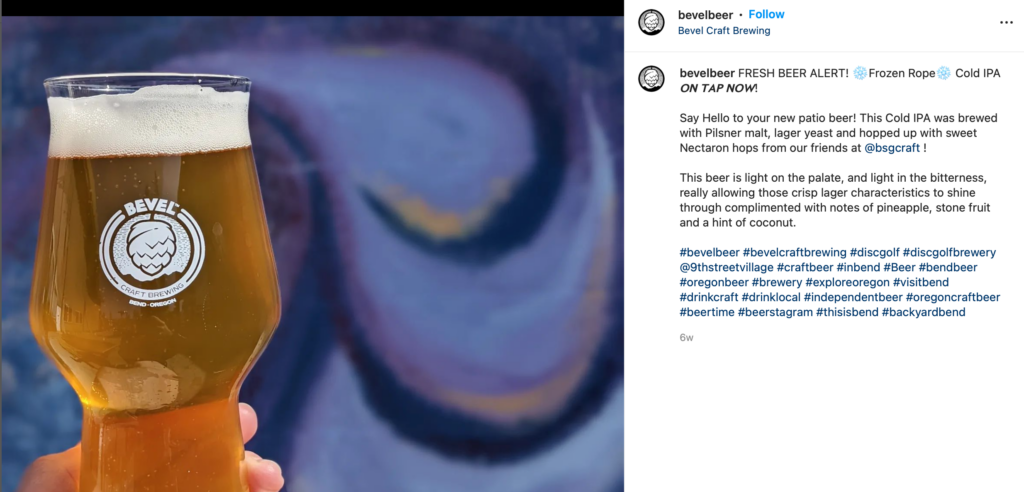IPA Is Still Cool, Right? Cold IPA Revisited

Since we first wrote about Cold IPAs a year ago they’ve become much more common on taplists, retail shelves, and in the beer blogosphere. This summer we’re coming in hot to revisit Cold IPA: what it is, what it isn’t, and what makes it go.
What it is
Cold IPA fuses classic West Coast IPA hop character, flavor intensity, and abv with a streamlined malt profile and a crisp, snappy finish. The recipe and brewing process is formulated to showcase hops in as clean and more-ish a base beer as possible.
What it isn’t
This one is easy: it isn’t a New England IPA.
Cold IPA eschews the pillowy texture, opacity, and effusive tropical-fruit hop character of juicy and hazy IPAs (although it does make similar use of biotransformation in its hop additions – more on this below).
And although Cold IPA favors a more classic West Coast-style attack with more clarity and hop bitterness than a hazy, it’s not a West Coast IPA either – the incorporation of unmalted adjuncts instead of crystal malt, and the use of lager instead of ale yeast combine to set it apart from paragons of the style.
“Wait a minute,” you may be thinking, “IPA fermented with lager yeast? We’ve seen this before.” Even though Cold IPA and India Pale Lager both make use of S. pastorianus, Cold IPA is fermented at warmer-than-normal temps for a lager, a process difference with some sensory impacts that sets these styles apart (more on this below, too).
What makes it tick
Unmalted adjuncts – specifically, corn and/or rice – plus a pale base malt (pilsner malts are ideal) create the requisite dryness, drinkability, and pale color. Caramel or crystal malts are omitted from the grain bill to enhance these effects. Unmalted barley, oats, rye, and wheat are typically avoided since their mouthfeel-boosting and haze-inducing attributes are not in play for Cold IPA.
Lager yeast, but make it warm: fermentation at +/- 65°F (18.3°C) achieves a couple of important things:
First, the SO2 that many lager strains produced is more effectively and quickly scrubbed out of solution, which lets the hop character take the spotlight in a way that isn’t always possible with a cold-fermented IPL.
Secondly, the use of lager yeast avoids introducing the highly expressive esters that are a feature of many of the ale strains favored for hazy and West Coast IPAs, which – again – spotlights the hops.

As Wayfinder Beer, pioneer of this style, puts it: Cold IPA is a canvas for hops. Because it’s such a hop-forward beer, and because it draws aromatic inspiration from classic West Coast IPA character, look for floral, citrusy, fruity, piney, dank, and resinous hops in the formulation.
Finally, dry hop additions at the tail end of active fermentation create opportunities for biotransformation in the fermentation vessel, making the whole greater than the sum of its parts. This technique represents some shared DNA with hazy IPAs – but, absent a hazy’s high-glucan grains and high-ester ale yeast, the effect in a Cold IPA is distinct.
Building a Cold IPA
Building a recipe with a low-color base malt is a must to hit the pale, clear appearance of a Cold IPA. Some very good options include:
Simpsons Low Color Maris Otter
As noted above, the unmalted adjunct grains used in Cold IPA grists have more in common with American lagers than they do with hazy IPAs. Flaked rice or flaked corn contribute little flavor and color while helping to keep the finished product’s body lean and terminal gravity low.
For hops – think West Coast.
Classic IPA hops like Cascade, Centennial, CTZ and Chinook are classics for a reason, and are right at home in Cold IPAs. Other public varieties like Comet and Triumph are also well-suited.
With its mix of tropical fruit (mango, pineapple) and pine aromatics, HS-Sequoia™ can help your Cold IPA walk a line between classic West Coast and the more contemporary taste for juiciness.
T-45 hop pellets are a great option for late additions because their higher concentration of acids and oils allow brewers to achieve the same or greater flavor impact with a smaller amount of hops.
The line of SafLager™ yeasts from Fermentis presents a number of options for fermentation – W-34/70 is known as a workhorse strain, while S-189 is known for its high attenuation.
Go deeper:
The Chilly & The Crispy: What’s a Cold IPA?